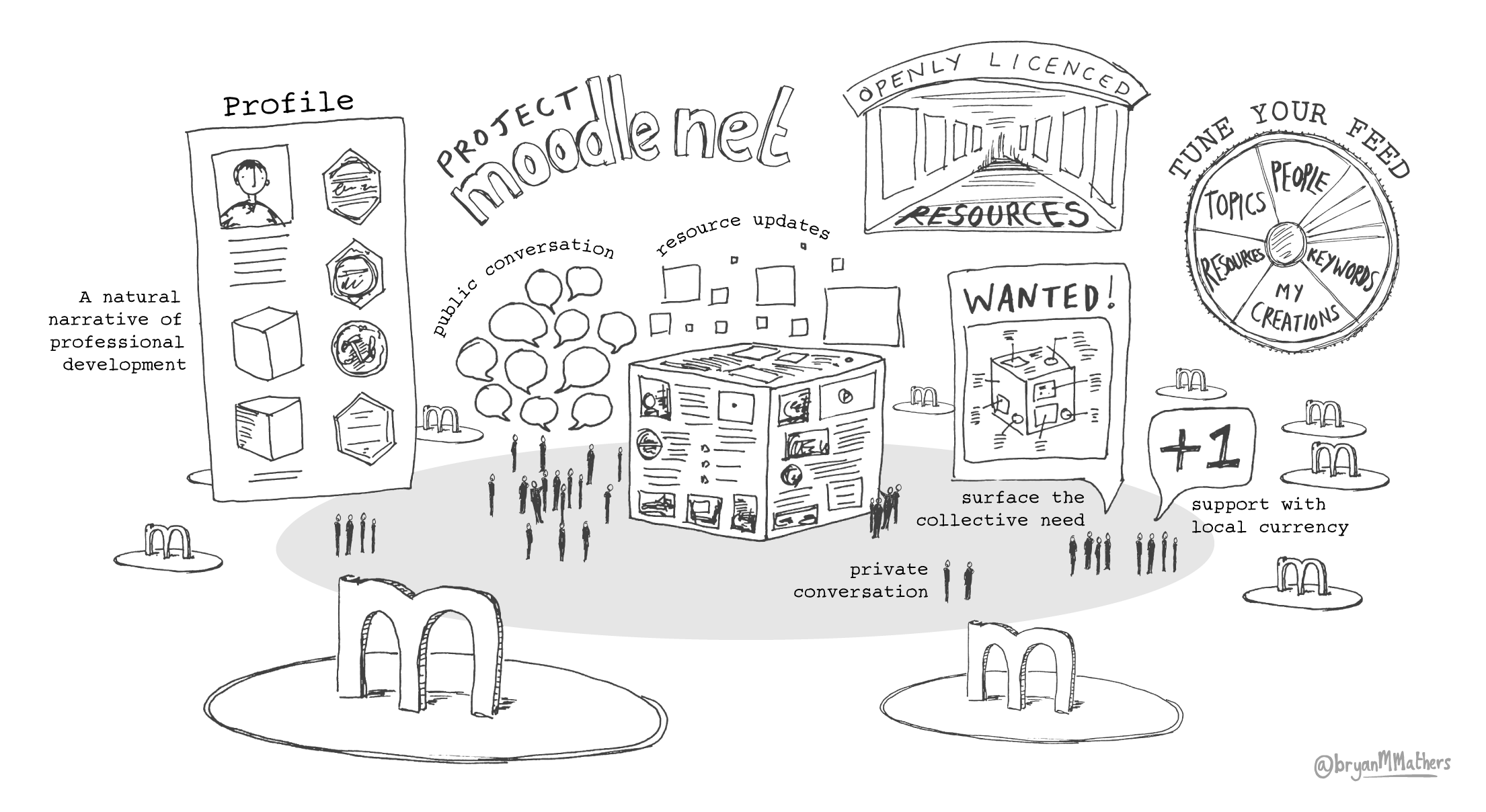I’m busy ideating, and talking to people around, Project MoodleNet. When you’re explaining something that doesn’t yet exist, you’ve got to use touchstones and metaphors, starting from where people are to help them understand where you want to go.

In these discussions I’ve been using three things to help me:
- A great ‘landscape’ image from Bryan Mathers (see above)
- The 3D printing social network Thingiverse (which I wrote about here)
- The Jetpack plugin for WordPress
It’s worth, I think, unpacking the third of these — if only so I’ve got a public URL to point people towards when I reference it elsewhere! It’s an imperfect metaphor, as it involves more technical understanding than we’ll require for Project MoodleNet.
Anyway, here goes…
WordPress and Moodle are similar
- Free (as in freedom)
- Open Source
- Host your own version
- Have it hosted for you
- Partnership network
How Jetpack works
Jetpack is a meta-plugin, a ‘plugin of plugins’ that adds lots of functionality to self-hosted instances of WordPress. In fact, it’s pretty much a no-brainer to activate Jetpack if you’re self-hosting. It connects your instance to your wordpress.com account, giving you:
- Faster page loading (via CDN)
- Additional security
- Detailed site stats
- Faster logins
- Payment integration

Where’s the value for the organisation behind WordPress?
So lots of value for users, but (you may think), what’s in it for Automattic, the organisation behind WordPress? Well…
- Secure, fast WordPress sites maintain brand value
- Better metrics around installation numbers
- Ability to upsell to customers direct from dashboard

Why is this a good metaphor for what we’re doing?
Project MoodleNet will be a standalone social network for educators focused on professional development and open content. It can be supercharged, however, by using a similar model to what WordPress have done with Jetpack.
Imagine users logging into a institutionally-hosted Moodle instance using their Project MoodleNet credentials because the two are connected in a similar way to how Jetpack works for the WordPress ecosystem.
To be clear, I’m not proposing that Project MoodleNet offers the same services as Jetpack, I’m saying that it serves as an example where you can create value in two places and additional value by linking them together.
This would mean…
- Teachers: professional social networking within their existing learning platform.
- Instructional designers: faster access to curated open resources.
- Sysadmins: better security and potentially reduced hosting costs.
(if you’re wondering about ‘reduced hosting costs’ it’s because we’re tentatively looking at how IPFS could be used in the wider Moodle ecosystem)
Finally…
This isn’t a perfect metaphor by any means, and so I’m looking for other ways to explain what we’re trying to achieve. However, the combination of Bryan’s image, referencing Thingiverse, and explaining JetPack is helping those I’m talking with to understand the kind of thing we’re trying to build.
What kind of metaphor would you use?
Main image CC BY-NC Fir0002/Flagstaffotos






